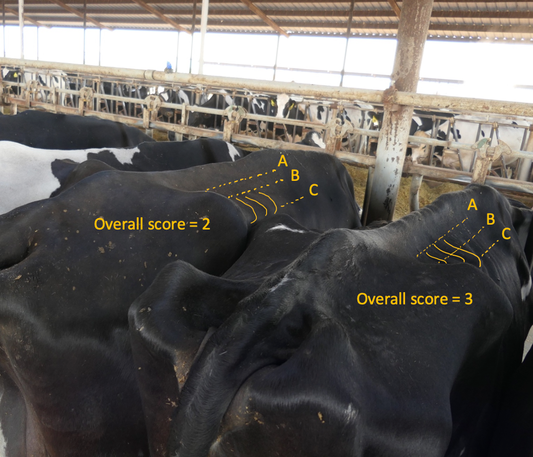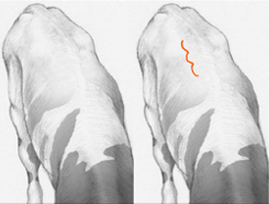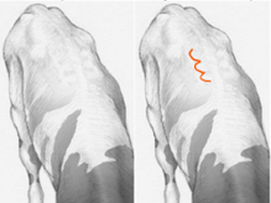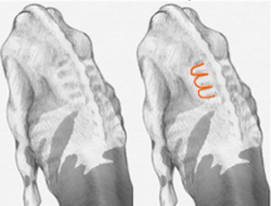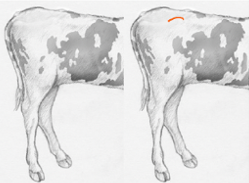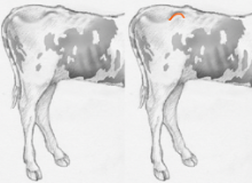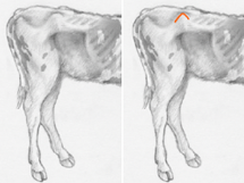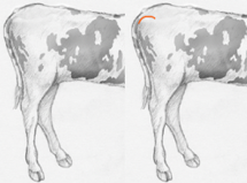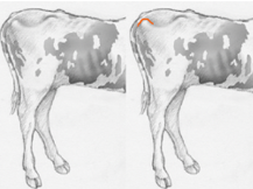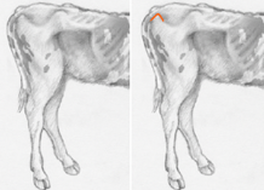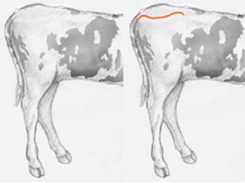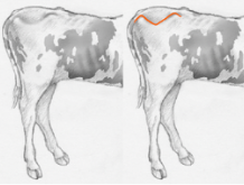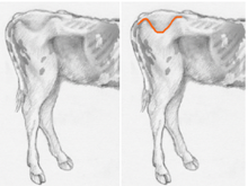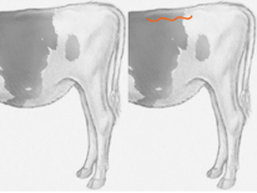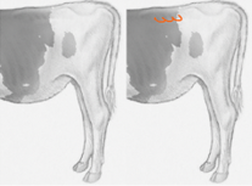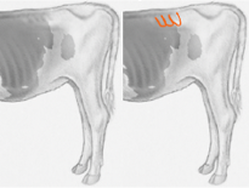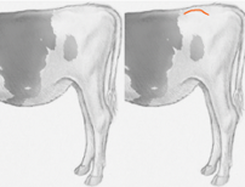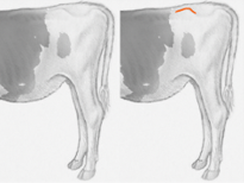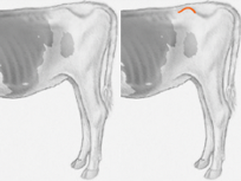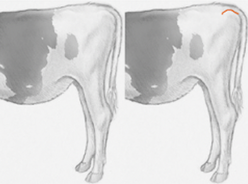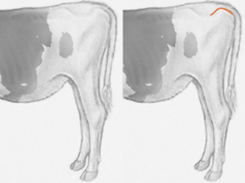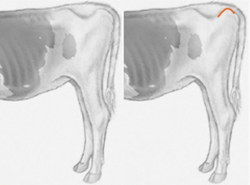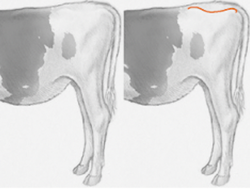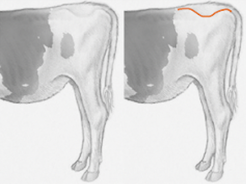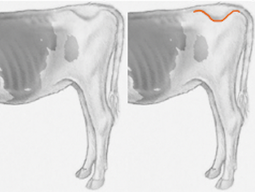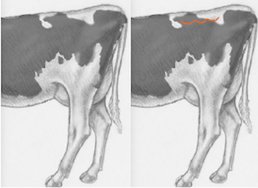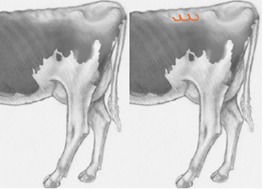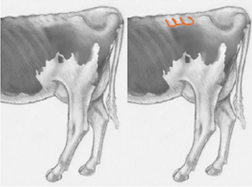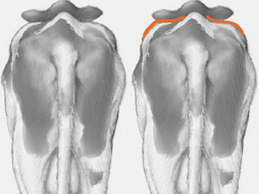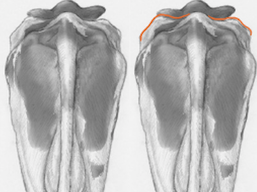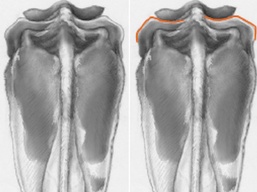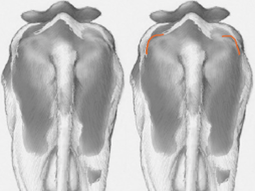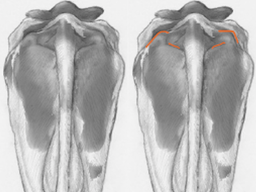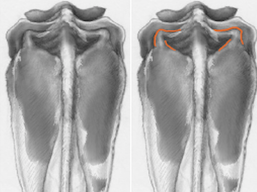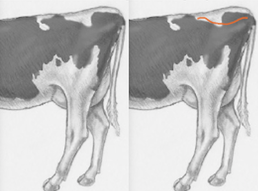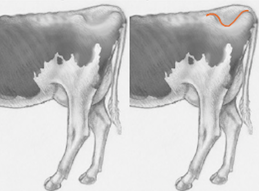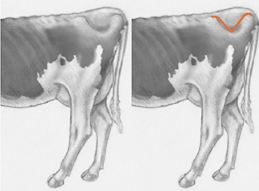Body condition is scored to evaluate extremes in nutrition programs and management for lactating and dry cows, as well as heifers. Calves are often underfed, so body condition is used as an outcome measure rather than being prescriptive about how calves are managed. Due to these differences, scoring guidelines vary by age class.
Which animals to assess:
Using the sample guidelines, score:
Using the "Everywhere" criteria, every pen, including the hospital, will be observed for emaciation.
- Calves
- Weaned heifers
- Springers
- Lactating cows
Using the "Everywhere" criteria, every pen, including the hospital, will be observed for emaciation.
When to assess:
Only standing animals will be evaluated. All classes of animals should be scored around feeding to facilitate this. If groups of animals are lying down, it is recommended that the auditor walk quietly amongst the animals, as this will often encourage them to stand. Cattle should be left lying if they do not rise after a calm walking of the pen.
Cows suspected to be non-ambulatory may be encouraged to stand (gentle knee to the rump) to evaluate their ability to stand.
Body condition should be scored while the auditor is standing at the same level as the animal, often from the rear and side. This may be done while animals are eating, milling around or being milked in flat-barns or tiestalls, at the same time tails and hygiene and potentially hocks are evaluated. In cases where cattle are spread out on pastures or large areas not easily navigated without causing undue stress or mini stampedes, it is acceptable to use binoculars to tally the number of cattle with poor hygiene (score 3). In this case, the auditor should record that proper scoring could not be done, but that cursory evaluation of the group revealed “X” number of cattle were found to be emaciated or with poor hygiene.
If the number of standing animals able to be scored is less than required by the sample calculator, use the number scored and provide an explanation in the comment section.
Cows suspected to be non-ambulatory may be encouraged to stand (gentle knee to the rump) to evaluate their ability to stand.
Body condition should be scored while the auditor is standing at the same level as the animal, often from the rear and side. This may be done while animals are eating, milling around or being milked in flat-barns or tiestalls, at the same time tails and hygiene and potentially hocks are evaluated. In cases where cattle are spread out on pastures or large areas not easily navigated without causing undue stress or mini stampedes, it is acceptable to use binoculars to tally the number of cattle with poor hygiene (score 3). In this case, the auditor should record that proper scoring could not be done, but that cursory evaluation of the group revealed “X” number of cattle were found to be emaciated or with poor hygiene.
If the number of standing animals able to be scored is less than required by the sample calculator, use the number scored and provide an explanation in the comment section.
How to assess:
Body condition is scored in 4 separate body regions: short ribs, hooks, pins, and thurl.
Scoring short ribs requires the most instruction. Visualize 3 lines: the first is at the base of the spine, as it slopes down and becomes level with the top of where the short ribs are (A). The second is at the tip of the short ribs (C), and the third is an imaginary halfway line between these two points (B). If only the tips of the short ribs are visible, this would be a score 1 for that region. If the short ribs are visible up to that imaginary middle line, that would be a score 2. If the short ribs are visible past that imaginary middle line, that would be a score 3.
Scoring short ribs requires the most instruction. Visualize 3 lines: the first is at the base of the spine, as it slopes down and becomes level with the top of where the short ribs are (A). The second is at the tip of the short ribs (C), and the third is an imaginary halfway line between these two points (B). If only the tips of the short ribs are visible, this would be a score 1 for that region. If the short ribs are visible up to that imaginary middle line, that would be a score 2. If the short ribs are visible past that imaginary middle line, that would be a score 3.
After scoring short ribs, score the hooks, pins, and thurl. The lowest score obtained across all 4 regions is the overall body condition score assigned to the animal.
For example, if a cow’s short ribs are visible at the tip (score 1), she has angular hooks and pins (both score 2), and has a moderate depression between the hooks and pins (score 2), she will be scored as a 1 overall. Thin and emaciated cows and calves may also have prominent spines and ribcages, but these are not officially counted towards their overall score. Both can be variable, indicative of age or timing of last milk feeding, and the ribcage is often not visible when lactating cows and heifers are being scored.
For example, if a cow’s short ribs are visible at the tip (score 1), she has angular hooks and pins (both score 2), and has a moderate depression between the hooks and pins (score 2), she will be scored as a 1 overall. Thin and emaciated cows and calves may also have prominent spines and ribcages, but these are not officially counted towards their overall score. Both can be variable, indicative of age or timing of last milk feeding, and the ribcage is often not visible when lactating cows and heifers are being scored.
When scoring calves, evaluate from both the front and sides. Calves scored in between feedings may have a sunken paralumbar fossa, creating a "shelf" with the short ribs. This is normal.
Benchmarks presented for scores 2 and 3 are based on the top 25% of farms based on available data.
Observe all animals, including the hospital, for emaciation, following the "Everywhere" criteria.
Benchmarks presented for scores 2 and 3 are based on the top 25% of farms based on available data.
Observe all animals, including the hospital, for emaciation, following the "Everywhere" criteria.
Calves and weaned heifers
0% of calves sampled should score a 2 (poor condition) or a 3 (emaciated).
0% weaned heifers sampled should score a 3 (emaciated).
0% weaned heifers sampled should score a 3 (emaciated).
Short ribs
Hooks
Pins
Thurl: Area between the hooks and pins
There is currently no repeatability test for calf or weaned heifer body condition score
Springers
0% of springers sampled should score a 3 (poor condition). It is rare to see springers in poor condition. The presence of several heifers in poor condition represents a failure in management and deserves immediate attention.
Short ribs
Hooks
Pins
Thurl: Area between the hooks and pins
There is currently no repeatability test for springer body condition score
Lactating cow
0% of lactating cows sampled should score a 3 (emaciated).
Short ribs
Hooks
Pins
Thurl: Area between the hooks and pins


